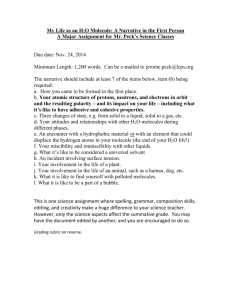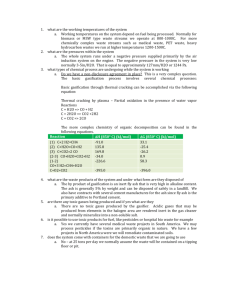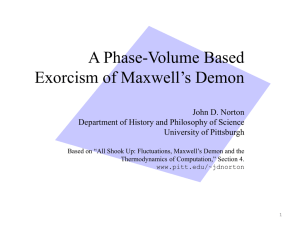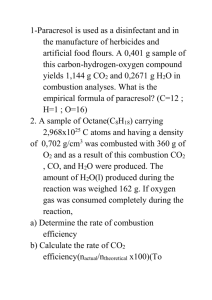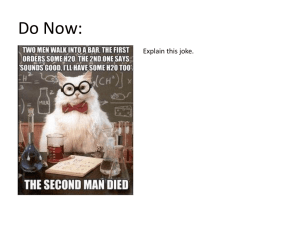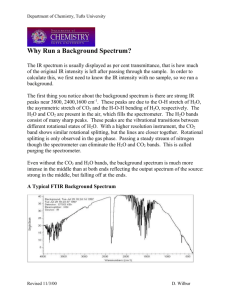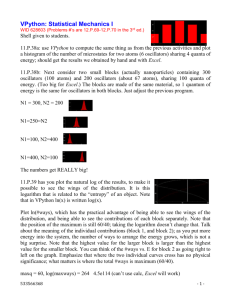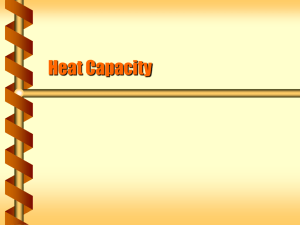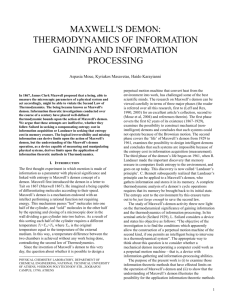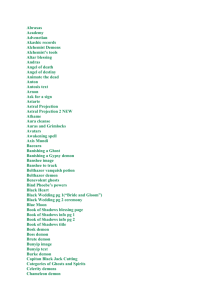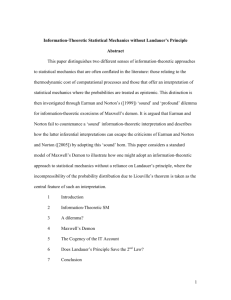Exam 1 from last year
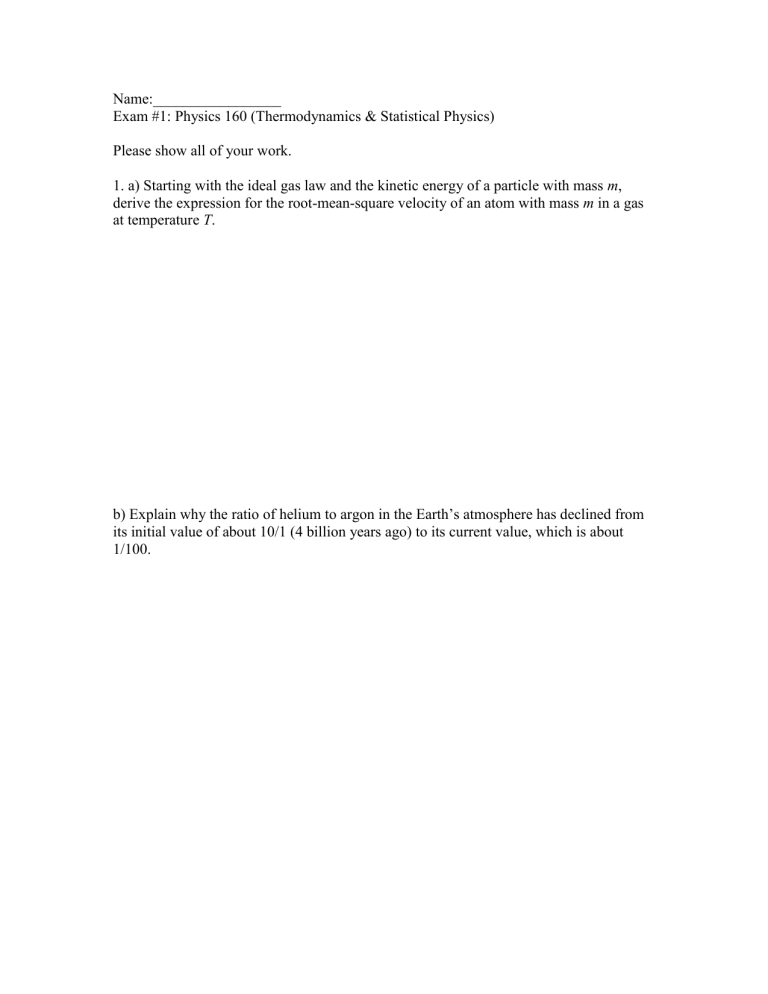
Name:_________________
Exam #1: Physics 160 (Thermodynamics & Statistical Physics)
Please show all of your work.
1. a) Starting with the ideal gas law and the kinetic energy of a particle with mass m , derive the expression for the root-mean-square velocity of an atom with mass m in a gas at temperature T . b) Explain why the ratio of helium to argon in the Earth’s atmosphere has declined from its initial value of about 10/1 (4 billion years ago) to its current value, which is about
1/100.
2. Degrees of freedom and equipartition of energy. a) Unlike water, a CO
2
molecule is linear, as shown below. The chemical bonds between the carbon and oxygen atoms can be thought of as springs: they can bend and stretch as do those in water. Briefly describe each of the degrees of freedom that a CO
2
molecule has, and give the total number.
O C O b) In class, we found that H
2
O has 12 degrees of freedom. Given this information, do you expect that CO
2
is a more or less effective greenhouse gas compared to H
2
O? (Give your answer on a per molecule basis, in other words, don’t concern yourself with the fact that there is more H
2
O than CO
2
in the atmosphere.) Support your answer. c) How much thermal energy is there in 3 moles of H
2
O at 500 K, if it is contained in a volume of 1 m
3
? How does this compare to when it is in a volume of 10 m
3
? You can treat it as an ideal gas here.
3. A cylinder contains 1 liter of argon (40 amu) gas at 1 atm. The container is sealed so that no gas can escape or enter it. The gas is somehow made to expand to a final volume of 5 liters, while the pressure rises directly proportional to its volume, such that its final volume is 5 atm. a) Sketch a graph of P vs V for this process. b) There is no other work done, other than “PV work”. What is the amount of PV work done on the gas? Be careful of your signs. c) What is the change in the internal energy during this process? d) What is the total heat added to or removed from this system? e) Is this an example of either an isothermal or adiabatic process? Briefly explain your answer.
4. Suppose you adiabatically compress 6 liters of nitrogen at standard temperature and pressure (5 degrees of freedom), down to one liter. a) What is the final pressure of this gas? c) Do expect that the temperature will remain the same, increase or decrease during this process? Briefly explain. c) How much work is done during compression? (Specify + or -)
5. If you have very hot water (0.1 kg at T = 90 o
C) in a styrofoam cup (which is a very good insulator and will not affect the water temperature at all), how much ice (which comes out of the freezer at T = -10 o C) will you need to add to bring the temperature down to 50 o
C? You can safely assume that:
the process is so fast that there is no heat radiated to, or absorbed from, the environment
the system comes to thermal equilibrium
Useful info:
Specific heat of water = 4190 J/kg-K
Specific heat of ice = 2000. J/kg-K
Heat of fusion of water = 334 x 10 3 J/kg
Heat of vaporization of water = 2256 x 10
3
J/kg
6. Describe in your own words what enthalpy is, and how it is different from internal energy.
7. An Einstein solid has 20 oscillators and 30 units of energy. a) how many different microstates (possible outcomes) are there? b) Describe the most likely macrostate. You do not have to calculate its multiplicity, just describe how the 30 units of energy are distributed among the 20 oscillators. c) If this solid were allowed to interact with another solid that was identical (20 oscillators and 30 units of energy), would this change the answer to part a? How about part b? You don’t have to solve explicitly, but give enough information to support your answer.
8. Back in physics 52, you saw the 2
S = Q/T is not useful. nd law of thermodynamics as
S = Q/T. Now we see it as S = k ln
. a) Explain what S = k ln
means, and b) describe one instance in which
9. If you flip 1000 coins, what is the probability of getting 600 heads and 400 tails?
10. Picture 100 marbles randomly rolling around on the floor of a square box (level with the ground). What is the probability of all of them being in the upper-left quadrant (25% of the accessible area) at any given time?
11. Maxwell’s Demon
The trap door connecting the two halves of a box of monatomic ideal gas is initially open for a long time, and is then closed, separating two chambers at the same temperature.
Then a little demon opens the trap door every time a faster-than-average gas molecule approaches from the left, and closes it when one of them approaches from the right. The net result is that the faster atoms collect in the right and the slower ones in the left.
same temperature throughout box now, the gas in the left is cooler than right a) Explain how this process violates the second law of thermodynamics. b) Propose a possible solution to this brain teaser. It is called “Maxwell’s Demon” and has been a big puzzle in physics since James Clerk Maxwell proposed it in 1867.




